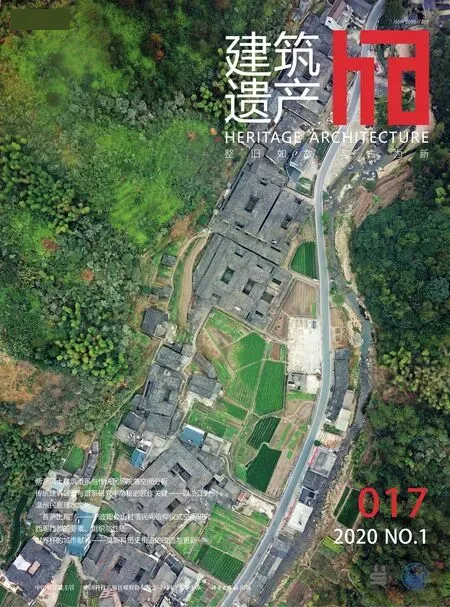《吴语方言区风土建筑研究(1)》编者按
本期和下期《研究聚焦》栏目将关注吴语方言区风土建筑。吴语方言区主要分布在今江苏省南部、上海市和浙江省大部分地区。在明清时代,吴语方言区是中国经济和文化重地,留下了大量精美的风土建筑遗产。
在本期专栏的5 篇文章中,有2 篇是对吴语方言区或其中部分区域的风土建筑谱系进行研究。其中周易知《两浙风土建筑谱系与传统民居院落空间组合研究》认为吴语方言区范围与宋代两浙路范围高度一致,使用“两浙”的地理概念来讨论吴语方言区的风土建筑,并详细梳理了吴语方言谱系的特征,指出其空间组合方式可概括为“堂-堂”式和“堂-横”式两种类型,且认为它们分别对应不同的家庭结构和人口聚居模式;石宏超《传统建筑区划与谱系研究中隐秘的匠作关键——以浙江为例》则选择以匠作体系中相对隐蔽的榫卯做法为线索,将浙江风土建筑分为三个区域。
其余3 篇则分别针对浙南温州地区、浙中金华地区和浙东宁波地区进行深入研究。丁俊清《温州民居理水文化》以温州民居对水的处理为线索讨论其营造智慧;戴方睿《基于宗族结构的聚落形态研究——以义乌倍磊陈氏为例》则以义乌西南部的倍磊为例,探讨聚落形态与宗族结构之间错综复杂的关系;孔惟洁、何依《“菩萨出殿”——宁波陶公山村落民间信仰仪式空间研究》重点探讨仪式活动对村落间的社会关系,以及村落空间意义的塑造功能。
对于吴语方言区中至关重要的太湖流域和浙北风土建筑及其聚落,将在下期本栏目继续探讨。
In the ‘Special Focus’ Column of this and the next issues, we especially focus on the vernacular architecture in the Chinese Wu dialect area, which includes the southern part of Jiangsu Province, the entire territory of Shanghai and the majority of Zhengjiang Province. This area had prominent economic and cultural significance in the Ming and Qing dynasties, leaving numerous elegant vernacular built heritage.
Of the five articles in this Column, two are researches on the vernacular architectural pedigrees of the Wu dialect area. In ‘Pedigree and Spatial Analysis of Zhe-style Vernacular Architecture’, Zhou Yizhi holds the point that the Wu dialect area highly complies with the administrative division in the Song Dynasty. He thus uses the geographical concepts of the East Zhejiang and the West Zhejiang to clarify the characteristics of the architectural pedigrees in the Wu dialect area. Meanwhile, he points out that the main difference in the spatial configurations of the two sub-areas is between the ‘hall–hall’ layout and ‘hall–side-wings’ layout which respectively corresponds to the different family composition and population reproduction modes. In ‘The Hidden Core Craftsmanship in the Study of Division and Pedigree of Traditional Architecture, Taking Zhejiang as an Example’, Shi Hongchao takes the relatively concealed clue—the types of mortise and tenon joints—to divide the vernacular architecture in Zhejiang Province into three areas.
The other three articles are targeted at Wenzhou area in southern Zhejiang, Jinhua area in central Zhejiang and Ningbo area in eastern Zhejiang respectively. ‘Culture of Water Management in Wenzhou Vernacular Dwellings’ by Ding Junqing shows the phronesis in Wenzhou vernacular dwellings through the lens of water management. In ‘Morphological Study of Vernacular Settlements Based on Lineage Social Structure: Beilei Chen Settlement in Yiwu, Zhejiang Province’, Dai Fangrui discusses the complicated relationship between the settlement form and the social structure of lineages through the example of Beilei in the southwest of Yiwu. ‘Procession of the Gods: Ritual Space of the Folk Belief in Taogongshan Traditional Villages, Ningbo’ by Kong Weijie and He Yi focuses on a traditional ritual of the local belief, discovering that the ritual behaviours participated in shaping the social relationship among the villages as well as the meaning of spaces.
The next issue will further discuss the vernacular settlements and buildings in the Tai Lake Basin and northern Zhejiang. (Translated by Dai Fangrui)
——以浙江地区为例

